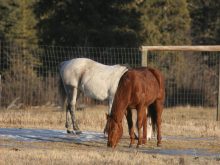Conventional farm health wisdom focuses on vaccines, antibiotics and other medical interventions.
In addition to these hallmarks of pig health management, some farms have gone back to basics in designing pig flow through their operations to improve animal health. Pig flow also affects sustainability of the farm’s human resources, marketing of hogs and profitability.
In most swine farms, sows are bred continuously through the week and therefore farrow continuously. This leads to greater variation in weaning age and weights and directly impacts health and profitability.
Read Also

Pork sector targets sustainability
Manitoba Pork has a new guiding document, entitled Building a Sustainable Future, outlining its sustainability goals for the years to come.
Farms that concentrate breeding activities to allow for larger groups to be bred at the same time, farrow at the same time and subsequently wean at the same time will benefit on many levels. We call this strategy batch farrowing.
For example, a farm can take sows they would normally breed over a four-week period and condense those matings into one week. This minimizes the range of ages within the wean-to-finish groups and achieves all-in all-out (AIAO) pig flow.
AIAO reduces the impact of disease shedding between age groups of pigs that are housed in the same airspace. If we have one age of suckling piglets throughout the farrowing rooms, when we wean those pigs, we have one age group in one nursery space and subsequently one finisher space. The total output of the farm changes very little. Rather than weaning 52 groups per year (weekly), a batch farrowing farm can wean 13 times per year (every four weeks) and have groups of pigs that are four times bigger.
Viral and bacterial challenges can be reduced by providing a warm dry environment for the pig. The reduction in age variation within a group allows for an appropriate temperature, humidity and air quality for each pig.
In continuous flow production, multiple ages of pigs or a group with wider age variation leads to the average temperature being appropriate for the average pig, but any outlying age groups (be those on the younger side or older side) will have to deal with an environment that is not suited to them.
The AIAO model achieved under batch farrowing also prevents new introductions of pigs to a space. Each time we add pigs to a group, we reset the disease challenge such that the new pigs will now need to deal with the health challenges of those that have come before. Batch farrowing stops that disease cycle and allows health challenges to occur, recover and recreate stable health.
For farms that grow out weaners, the AIAO benefit to disease management is a big advantage. Those farms selling their weaned production will create a bigger group of pigs that is more attractive to buyers, whose goal is to fill a nursery barn with one large group of similar age.
Reducing the number of breeding or weaning events from 52 to 13 can also provide efficiencies on transportation, space use and optimization of feed budgets. In modern pig production, we are also focused on biosecurity to keep diseases out of farms. Each time we have a trailer back up to a farm to load or unload pigs, we have an opportunity for disease transmission to occur. Batch farrowing will reduce the number of trailer contacts to a farm.
However, batch farrowing comes with drawbacks. All those tedious or challenging tasks, for example washing farrowing crates, occur less frequently but the task is four times bigger.
Using our farrowing crate example, continuous flow production may have the need to wash and disinfect 25 farrowing crates each week, while the same farm in a four-week batch farrowing system would need to wash and disinfect 100 farrowing crates. The silver lining for farms struggling with labour shortages is that a batch farrowing system means that these larger tasks occur infrequently.
As well, if breeding is now happening one week out of every four, the three non-breeding weeks might help farm owners and staff to find some work-life balance and allow for vacations or time away. This is not always easy to achieve in livestock production.
Batch farrowing models vary as well. Four-week batching is common, but some farms find five- and six-week batch systems fit their farm operations better.
There are pros and cons to batch farrowing, but depending on a farm’s goals and its ability to transition to batch farrowing, the system could help stabilize and improve animal health with little cost to the farm.
Blaine Tully is a veterinarian and owner of Swine Health Professionals Ltd. in Steinbach, Man.

















